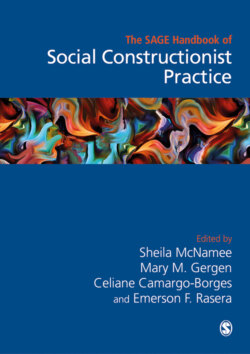Читать книгу The Sage Handbook of Social Constructionist Practice - Группа авторов - Страница 137
На сайте Литреса книга снята с продажи.
Reflexive Research of Socio-Material Practices
ОглавлениеOne aspect of reflexivity is that questions, whether asked in therapy or in research, are anything but neutral data-retrieval procedures. Karl Tomm's seminal writing on reflexive questions in therapy (1987) paralleled how action researchers (e.g., Heron and Reason, 1997) saw questions potentially inviting consideration and enactment of new social realities – they could be ‘future-forming’ in Ken Gergen's language (2015). Furthermore, reflexivity has an ethnomethodological meaning (e.g., Heritage, 1984) shared by process-oriented philosophers (Nail, 2019; Stengers, 2011); that posthuman life is normally in flux. Socio-material practices are ways humans responsively try to stabilize or bring familiar order to that flux. Thus, we sought to research socio-material practices without reifying them, and to instead find generative ways to identify and represent them.
Clarke's Situational Analysis (SA; Clarke et al., 2017) offers mapping procedures useful for zooming in and out to better understand socio-material practices. Macroscopically, John Shotter (2006) referred to ‘responsive orders’ that we see as stitched together by socio-material practices tacitly perpetuated in assemblages and networks of practice. Zooming in helps us look at specific socio-material practices, to revisit alternative sense-making that had become closed up or made seamless by such practices (Schegloff and Sacks, 1972). SA maps, in other words give us lenses for considering the actual and the possible.
